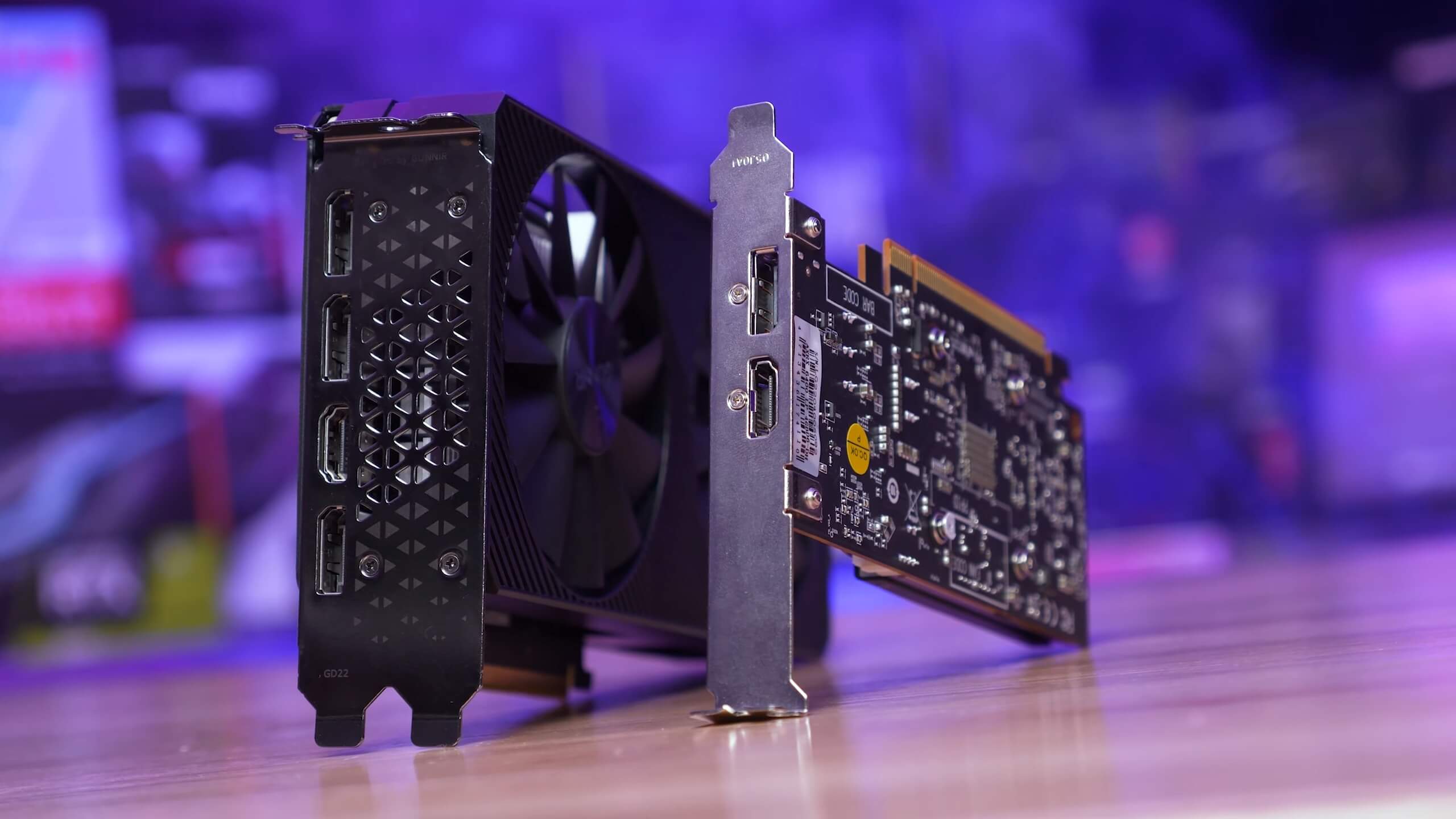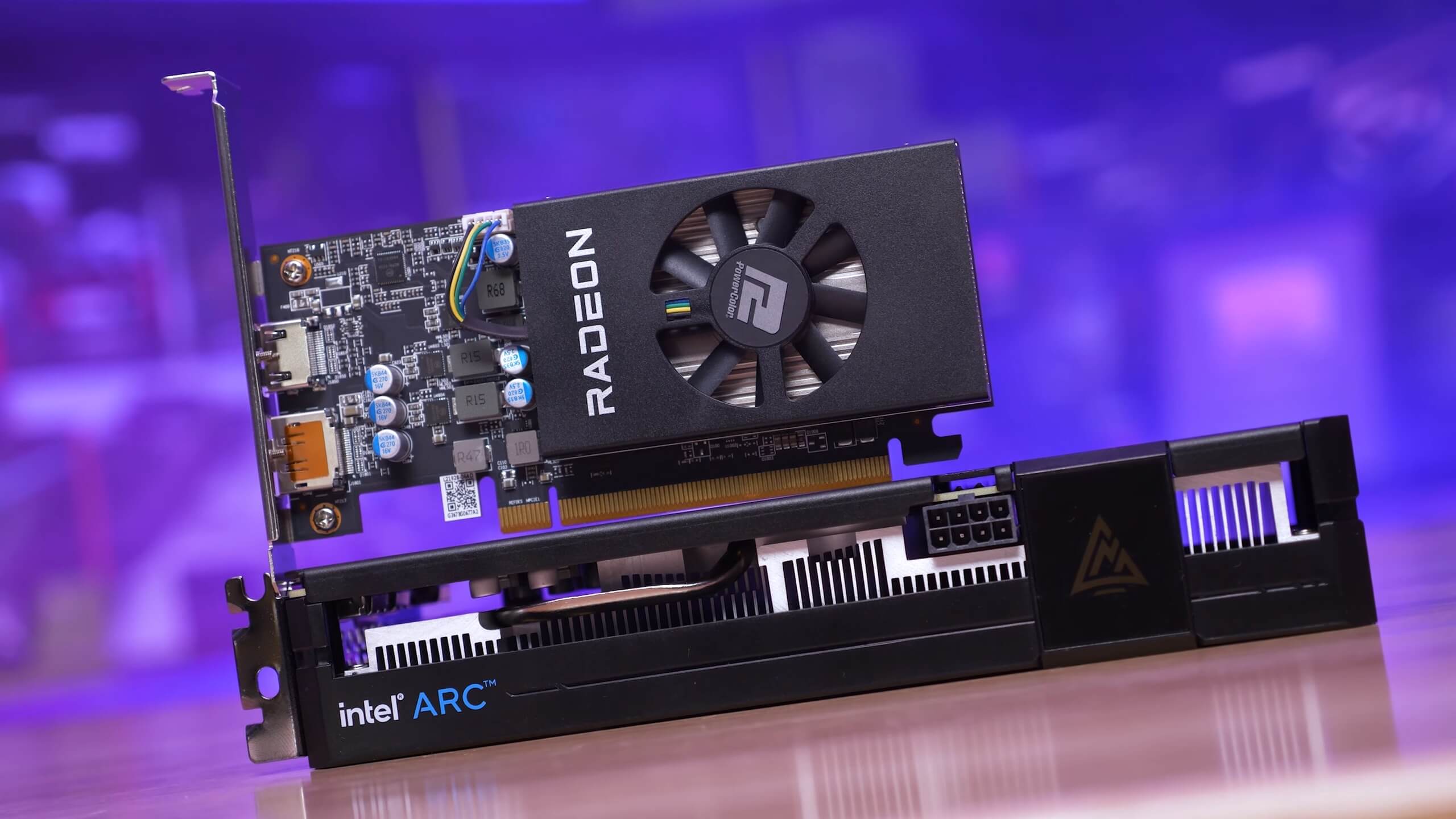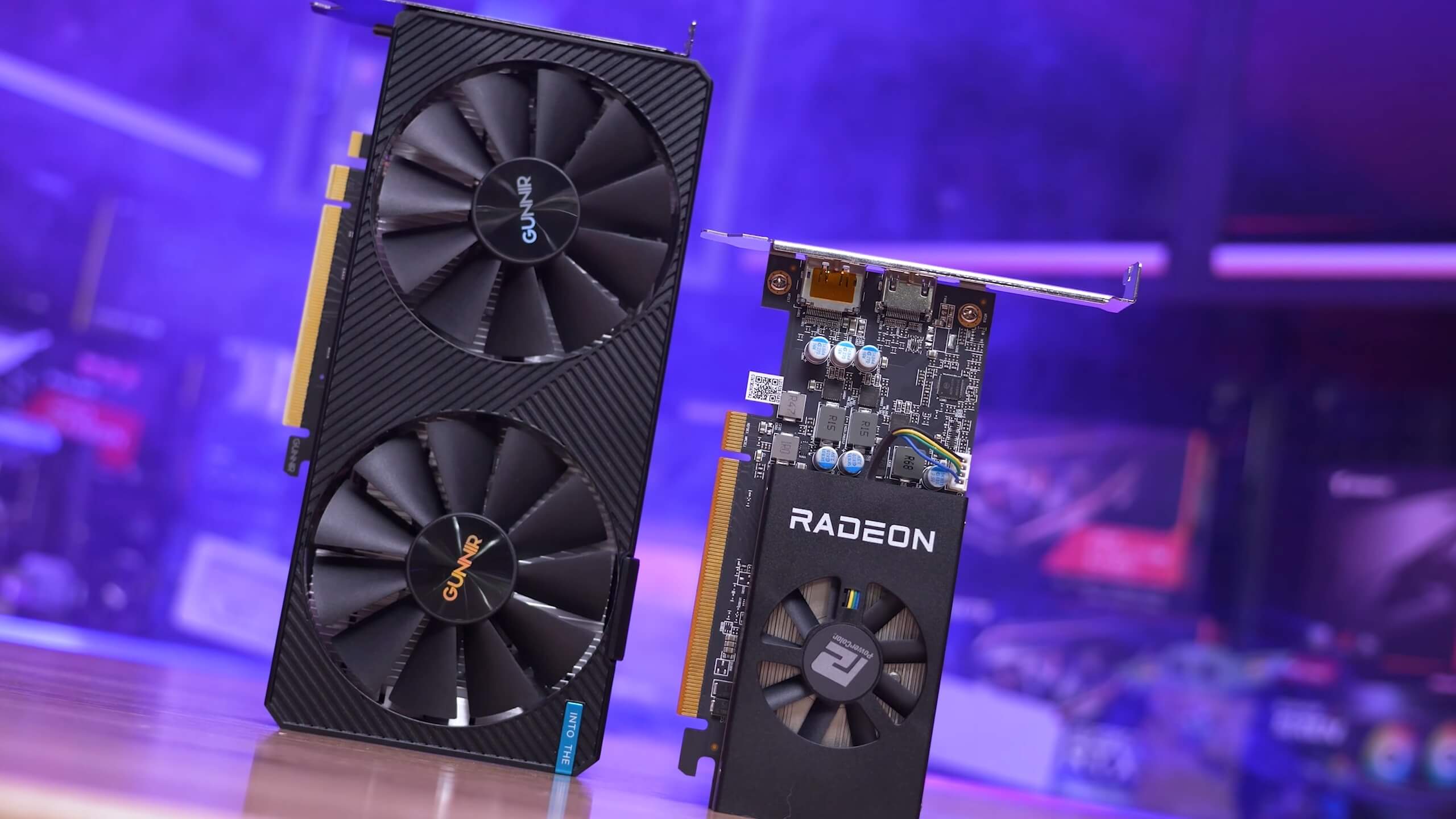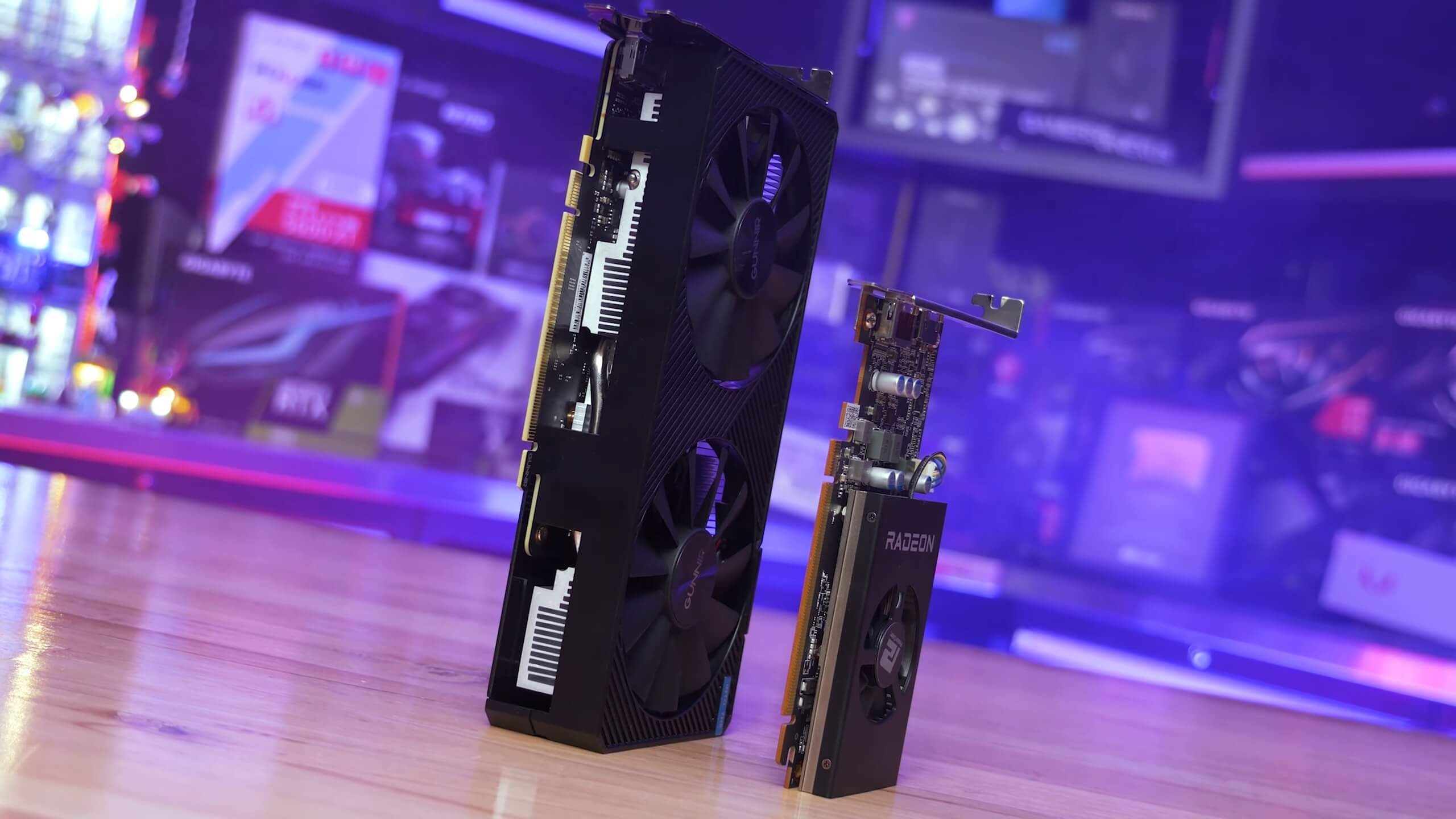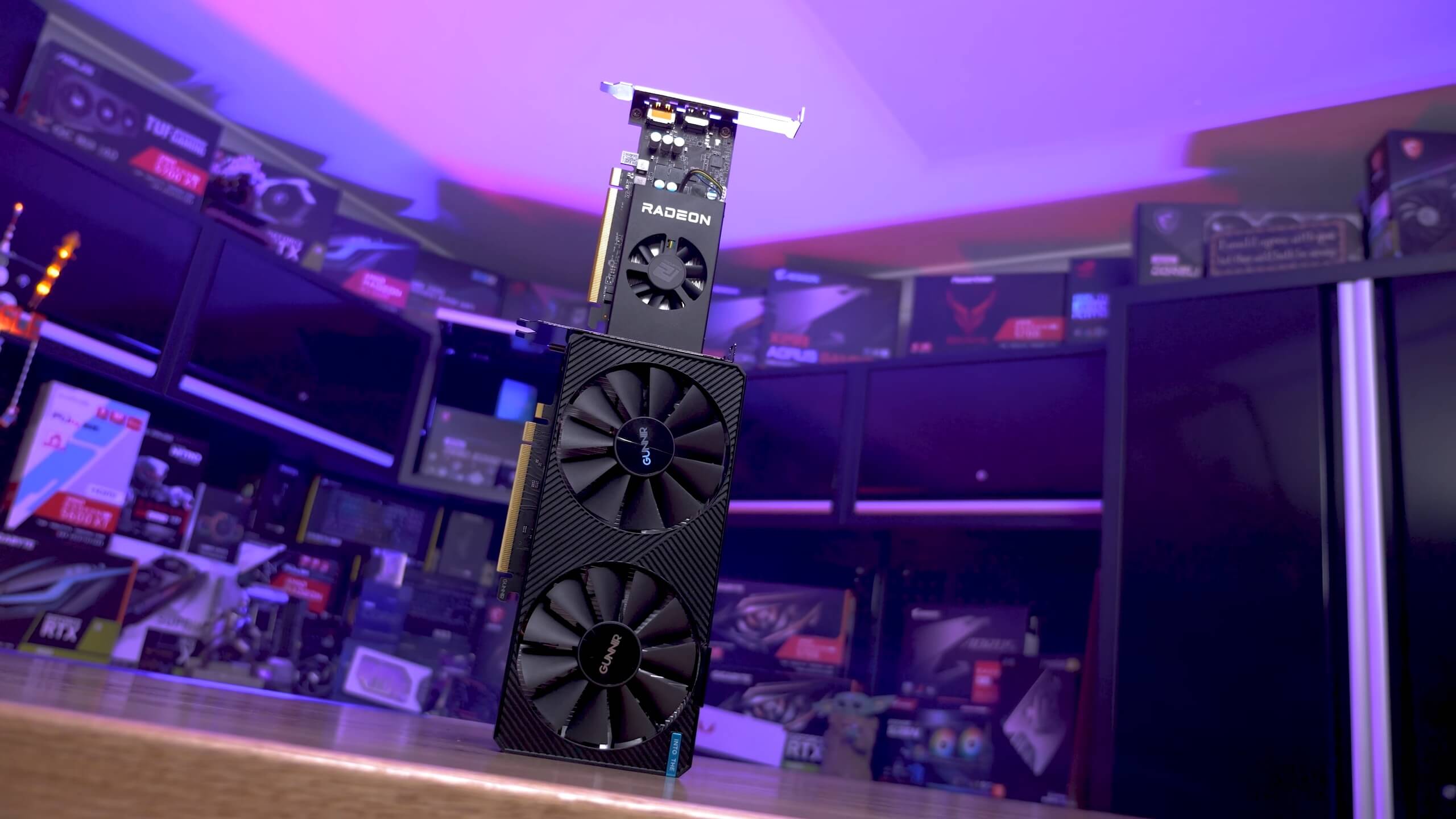Today we're taking another look at Intel Arc 3 A380, but this time with a 51 game benchmark head to head against AMD's $150 Radeon RX 6400. This will give us a better idea of how the Arc A380 performs across a wide range of titles and – spoiler alert – it wasn't all smooth sailing, but there were some positive signs as well, it's a very mixed bag and we're keen to show you the results.
If you missed it earlier, we covered the A380 for the first time about 2 weeks ago with our standard review format, which looked at performance in a dozen games, compared it with a range of other budget GPUs, while also evaluating power consumption and thermals.
The aim for this comparison is to take that testing a big step further with a 51 game benchmark covering 1080p and 900p (1600x900) resolutions using dialed down quality settings. At some point we might also look at overclocking performance as a lot of you have requested, but first we wanted to prioritize stock performance to get a clear baseline for how the Intel Arc 3 A380 performs.
As of writing, Intel has yet to release the A380 outside of China, so for most gamers this is still an unreleased product. But this is less about buying advice and more just taking a look at what's going on with the first Intel Arc GPU which is targeting the entry-level market.
For testing we're using our Ryzen 7 5800X3D GPU test system, and yes, we know no one is going to pair a budget graphics card with this CPU, but the point is to test pure GPU performance while avoiding to introduce a CPU bottleneck which would skew the data.
For low-end to entry-level graphics testing we typically use medium quality settings in games, or settings that make sense for a given title. Also please note, for this testing both the A380 and RX 6400 were tested exclusively with Resizable BAR enabled. As we found in our original A380 review, ReBAR is mandatory for this product as performance is simply horrible without it.
On the drivers front, we're using AMD's Adrenalin Edition 22.7.1 and Intel Graphics Driver 30.0.101.1743. As mentioned before, benchmarks were run at 1080p and 900p and we'll go over about a dozen or so titles individually before getting into the 51 game breakdown graphs.
Gaming Benchmarks
Starting with Death Stranding, we find comparable performance between these two GPUs which is not a bad result for the A380 if it ends up costing ~$50 less than the Radeon 6400.
At 900p the Intel GPU was 3% faster and then at 1080p the average frame rate performance was much the same, though the A380 did offer 20% stronger 1% lows.

The A380 was incredible relative to the Radeon 6400 in Hitman 3, delivering over 70% more performance at both tested resolutions. The game was noticeably smoother and much more enjoyable with the Arc GPU, hitting 77 fps at 900p and just shy of 60 fps at 1080p, while the RX 6400 was good for just 34 fps.

Quite a remarkable result here, and while we did see other similar examples, I regret to inform you that they were few and far between...
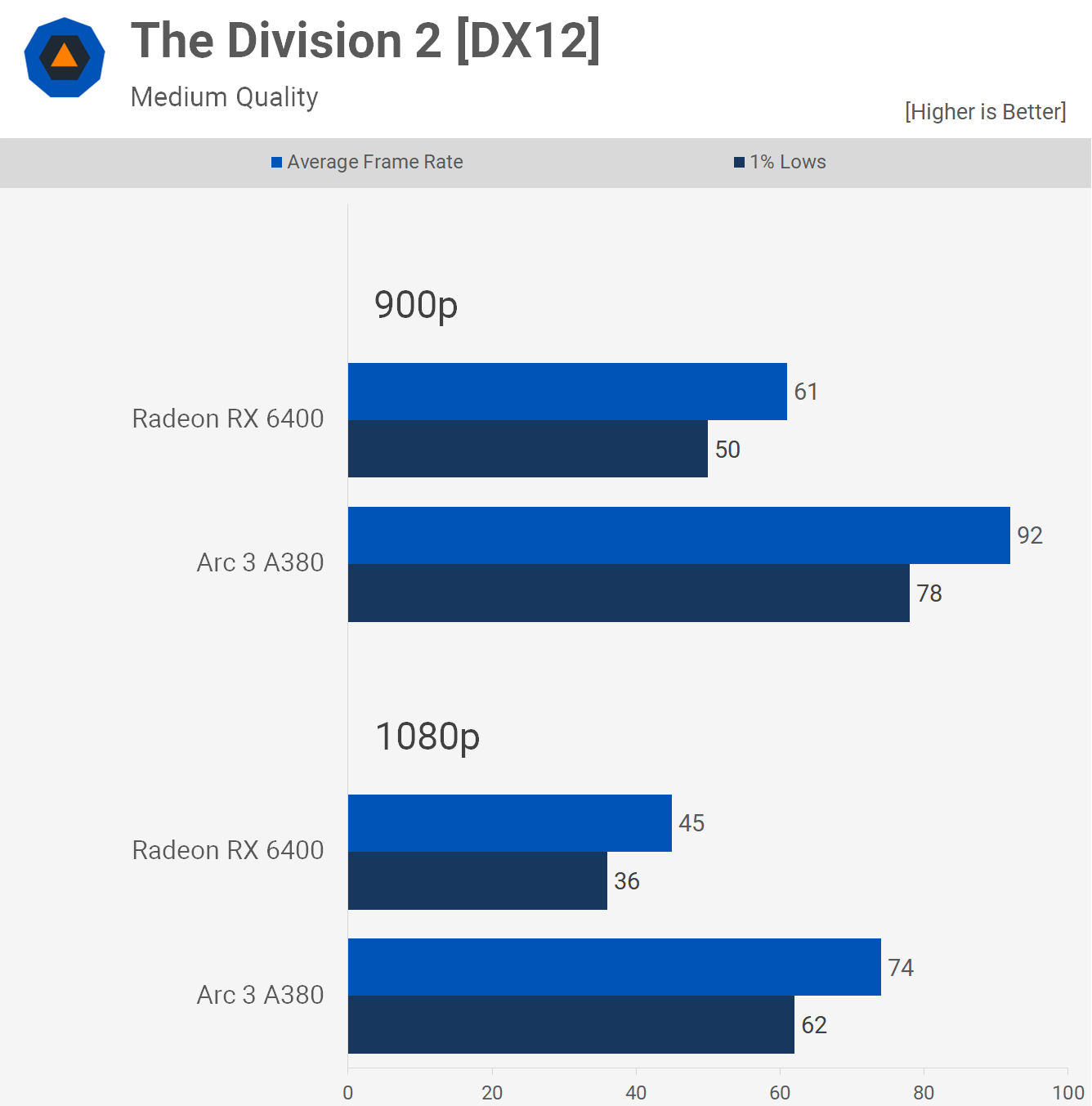
Another great showing for the Intel A380 was The Division 2, where it was 64% faster than the Radeon 6400 at 1080p, taking the average frame rate from a laggy 45 fps to a rather smooth 74 fps with 1% lows of 62 fps.
The experience using the Arc GPU was worlds better and it's a shame we didn't see more of this.
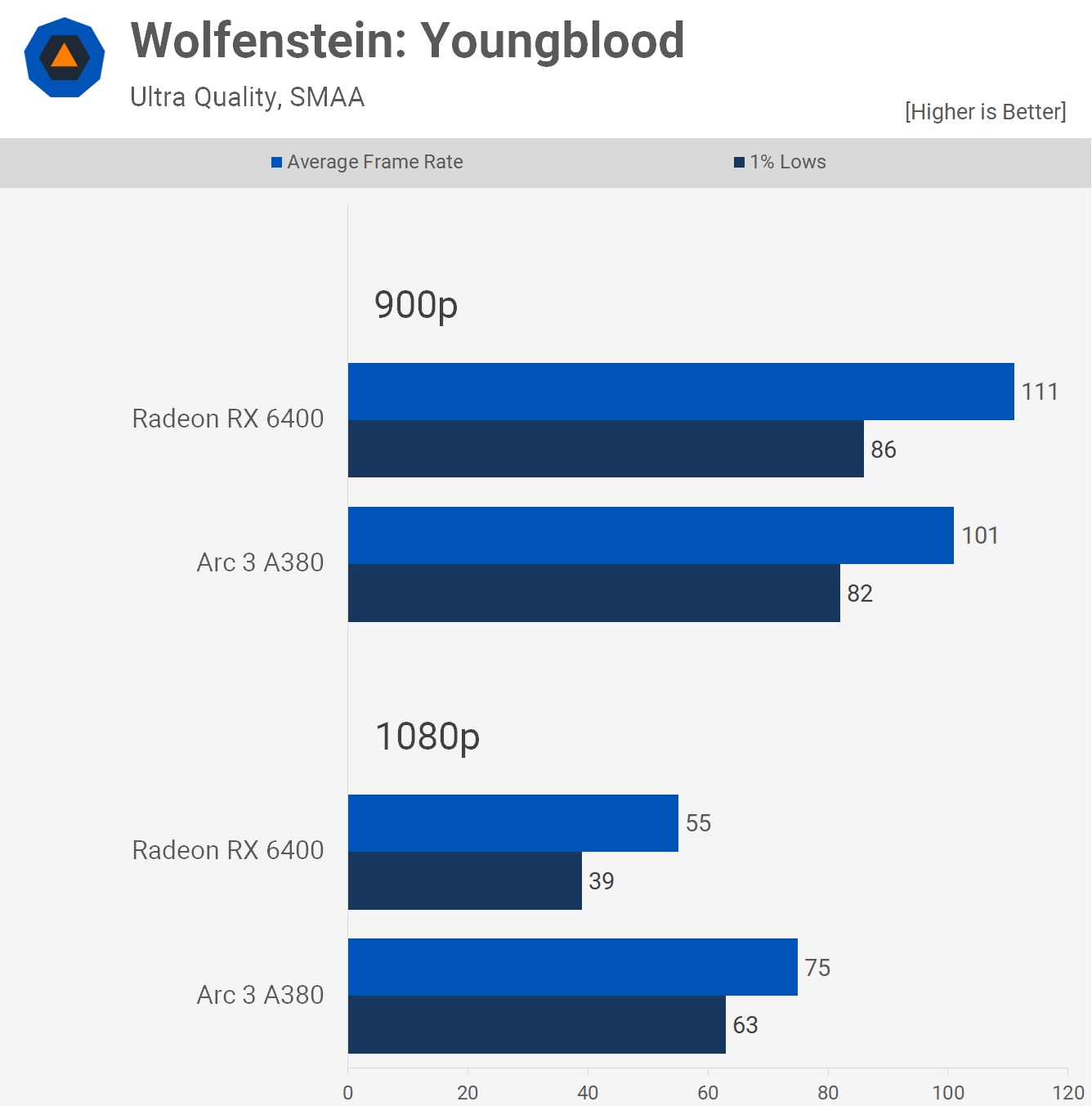
Wolfenstein: Youngblood was another successful title for the Arc GPU. Both the A380 and RX 6400 performed very well at 900p with over 100 fps on average, though the Radeon GPU did end up coming out on top by a 10% margin.
However, we were able to use the 'Ultra' quality preset and this gave the A380 and its larger 6GB VRAM buffer an advantage at 1080p, allowing it to pull ahead by a 36% margin to deliver a very respectable 75fps on average.
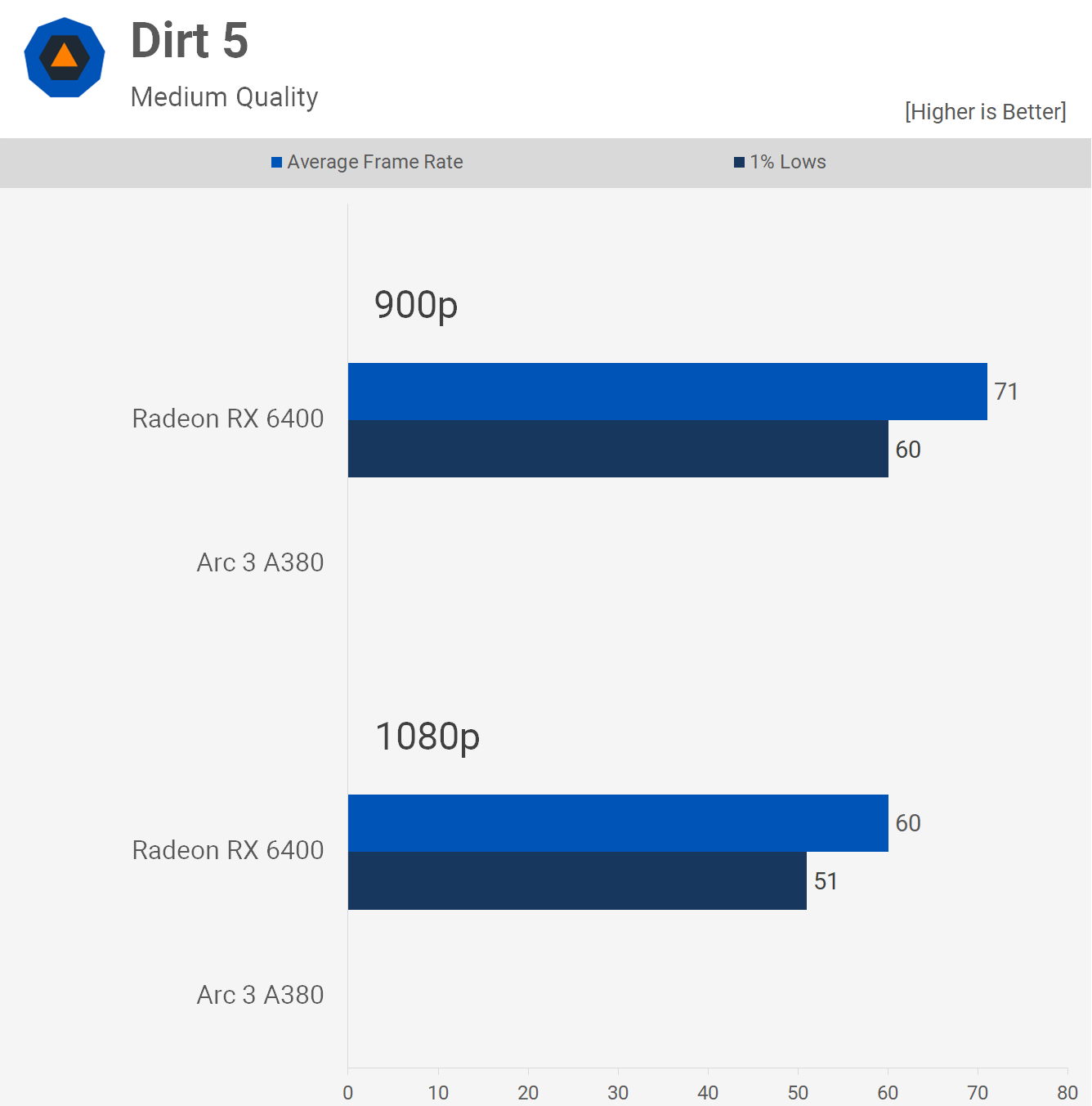
We hit our first road block with the A380 when trying to fire up Dirt 5 which flat out just doesn't work with the Intel GPU, the game won't even load, you just get served an error message.
Obviously that's an unfortunate software issue, but it's also a shame as this modern title runs very well on lower end hardware using modest quality settings, and as such is highly playable using the RX 6400.
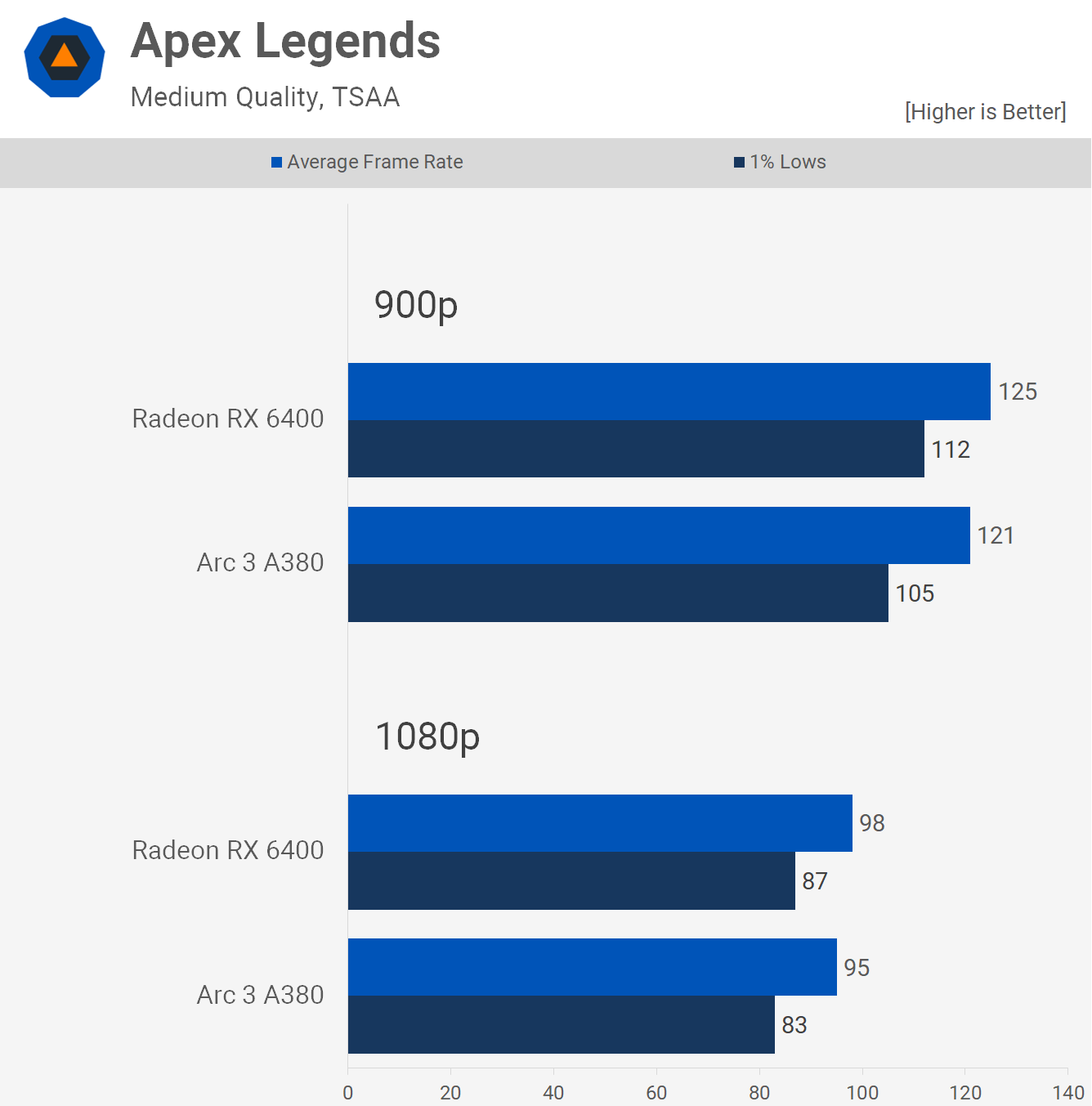
Next we have Apex Legends, and here the A380 was competitive with the Radeon 6400, trailing it by just a few frames and that means both were good for over 90 fps at 1080p. A good result for the A380, especially if it does end up being cheaper than the RX 6400.

It's a similar story in F1 22, here the A380 was 10% slower at 1080p which isn't too bad, though the 16% margin it trailed by a 900p is starting to get up there and for those with high refresh rate monitors you'll certainly notice the difference here.
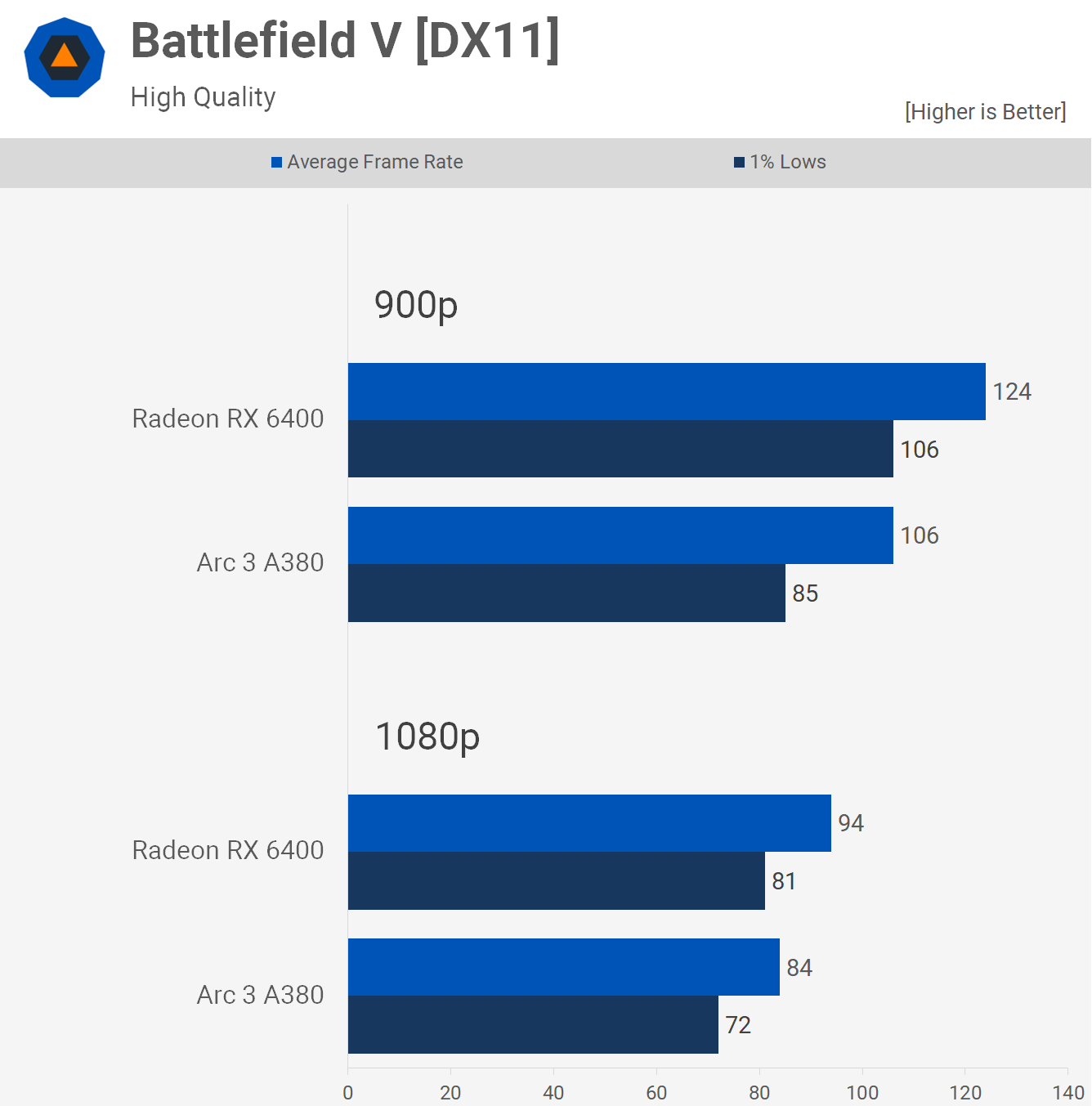
Battlefield V ran much better using the Radeon GPU at 900p, the A380 was 15% slower when looking at the average frame rate and 20% slower for the 1% lows.
The margins did close up at 1080p, but even then the Intel GPU was 10% slower. Overall the game was playable, but you'd rather play it with the RX 6400 if you had a choice.
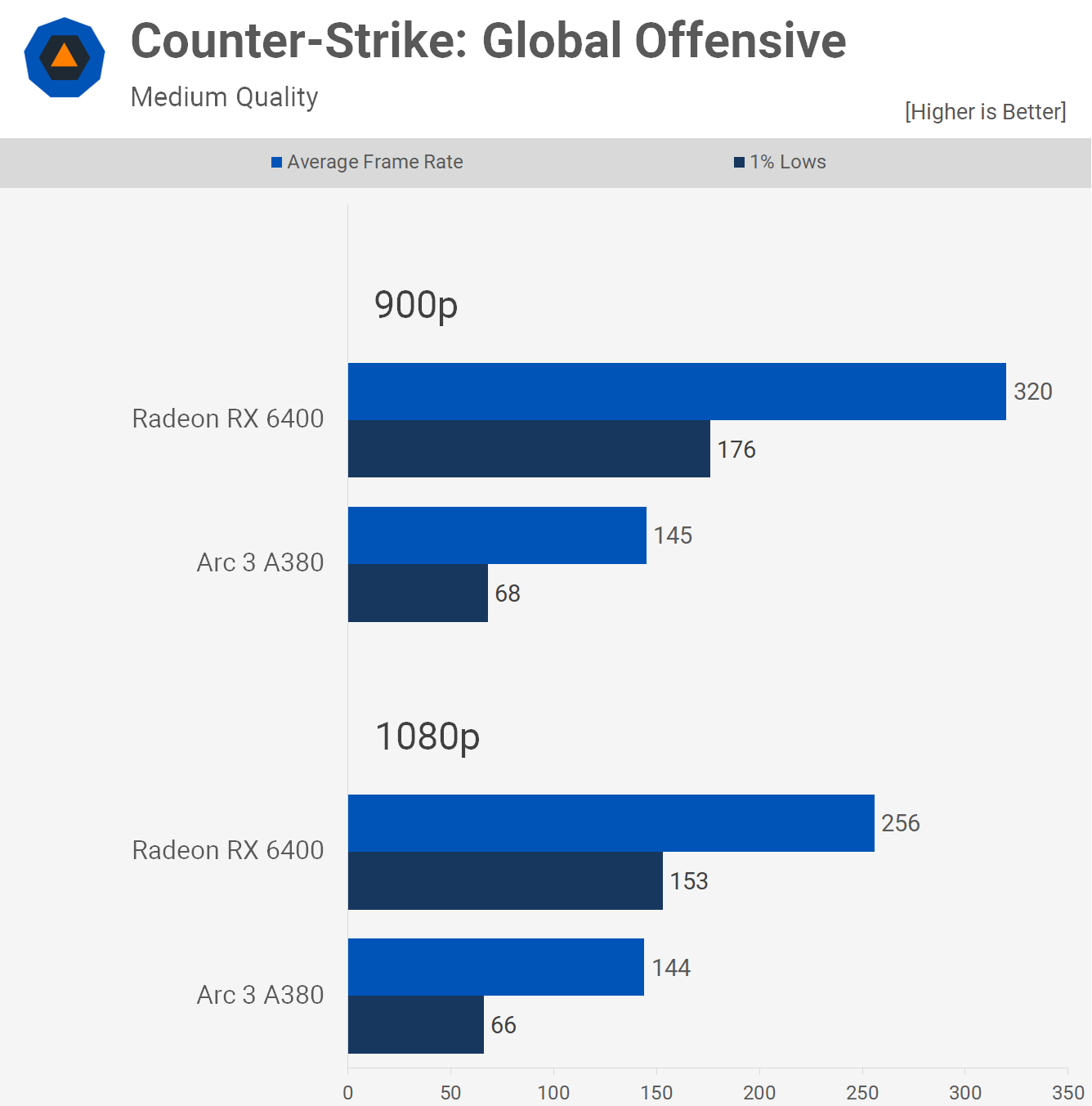
We've heard how Intel has prioritized support for new APIs such as DirectX 12 and Vulkan, so perhaps these results shouldn't come as a surprise. Still CSGO is a wildly popular game, so these results are going to be a complete and utter deal breaker for a good many of you.
You're looking at more than twice the performance with the Radeon 6400 in CSGO versus the Intel A380...
You're looking at more than twice the performance with the Radeon 6400 and while the A380 still looks very playable, stability was a real concern here.
Twice during our testing the game crashed to desktop, and that's not something that has ever happened with a Radeon GPU, at least not in the last few years of benchmarking with this title. Intel has a lot of driver work to do here still.
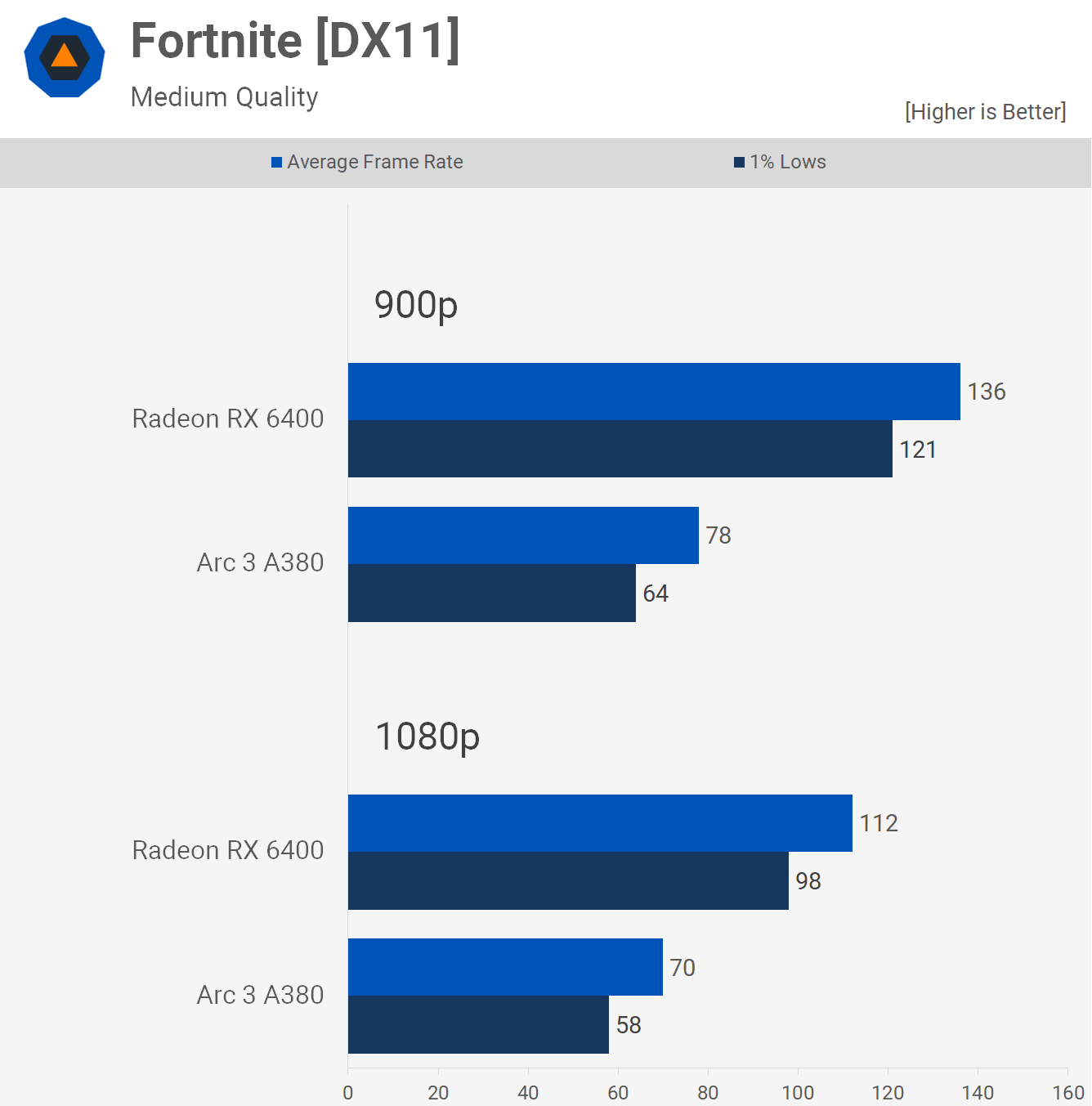
Another title where the Intel A380 struggled was Fortnite. Granted, these frame rates are playable, but they're less than ideal for a competitive shooter and what we received from the Radeon 6400 was significantly more impressive, and far more desirable for those of you rocking a high refresh rate monitor.
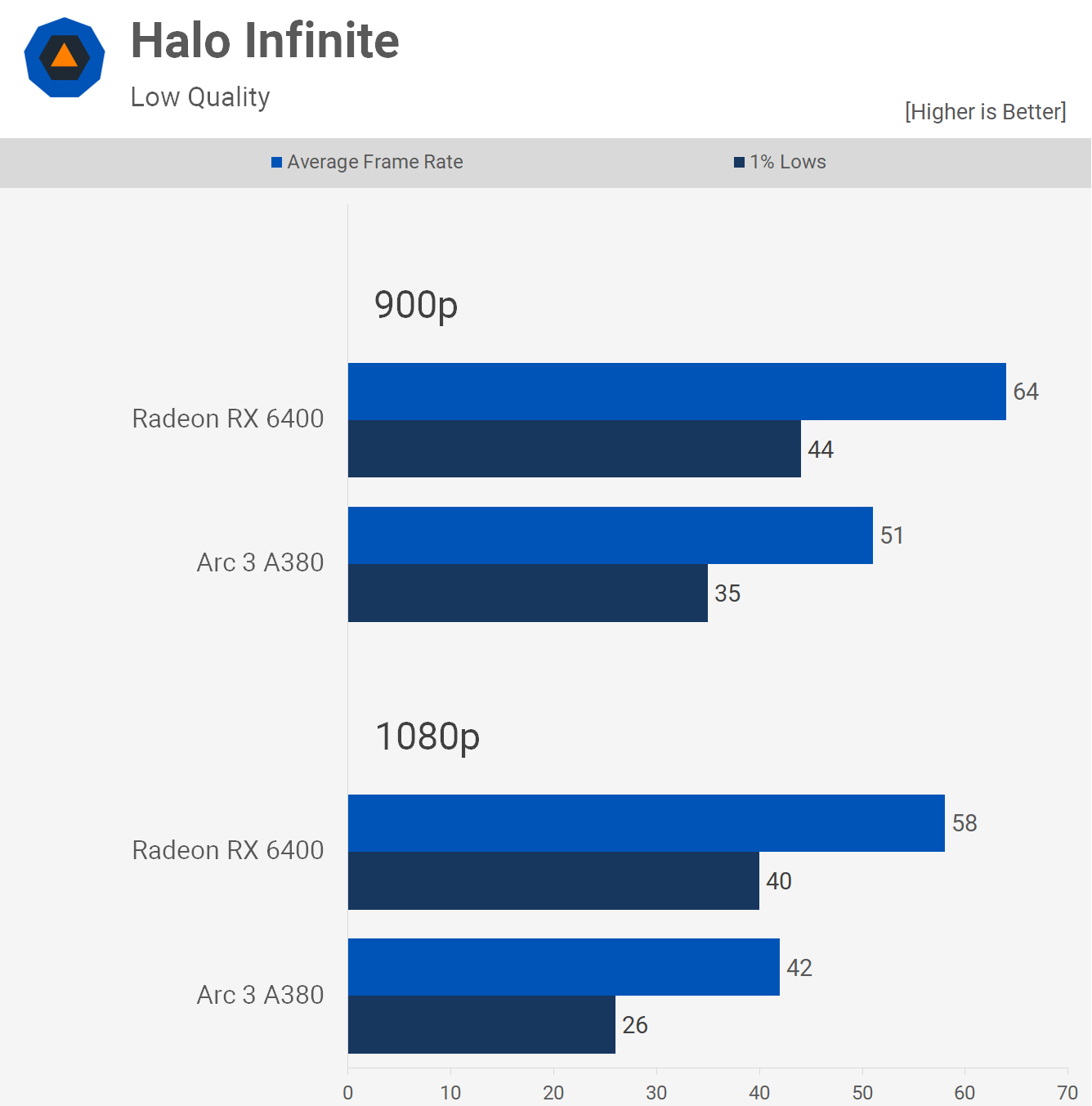
Halo Infinite using the lowest quality settings saw the A380 fail to hit 60 fps, even at 900p, so performance overall was disappointing, especially considering that at 1080p the Radeon 6400 was almost 40% faster.
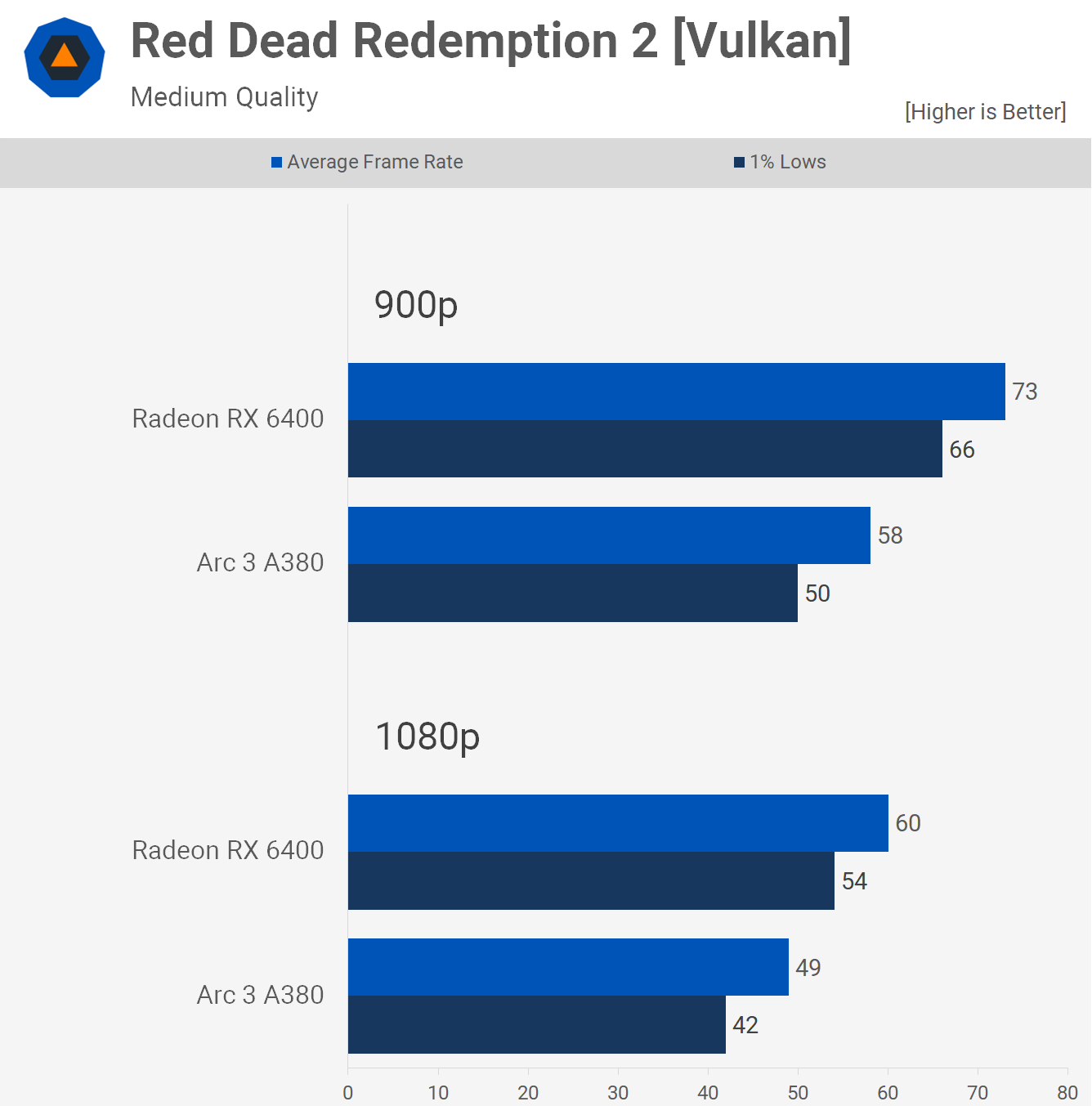
Moving on to Red Dead Redemption 2, where we ran into more driver related issues. This time the Vulkan API caused crashes, it was possible to run our benchmark but it did take a number of passes to get the results, basically the game was completely unstable.
However, DirectX 12 appeared to run without issue so the A380 was benchmarked using DX12 while the RX 6400 was tested using Vulkan. The end result being a 26% performance advantage for the Radeon at 900p and 22% at 1080p.
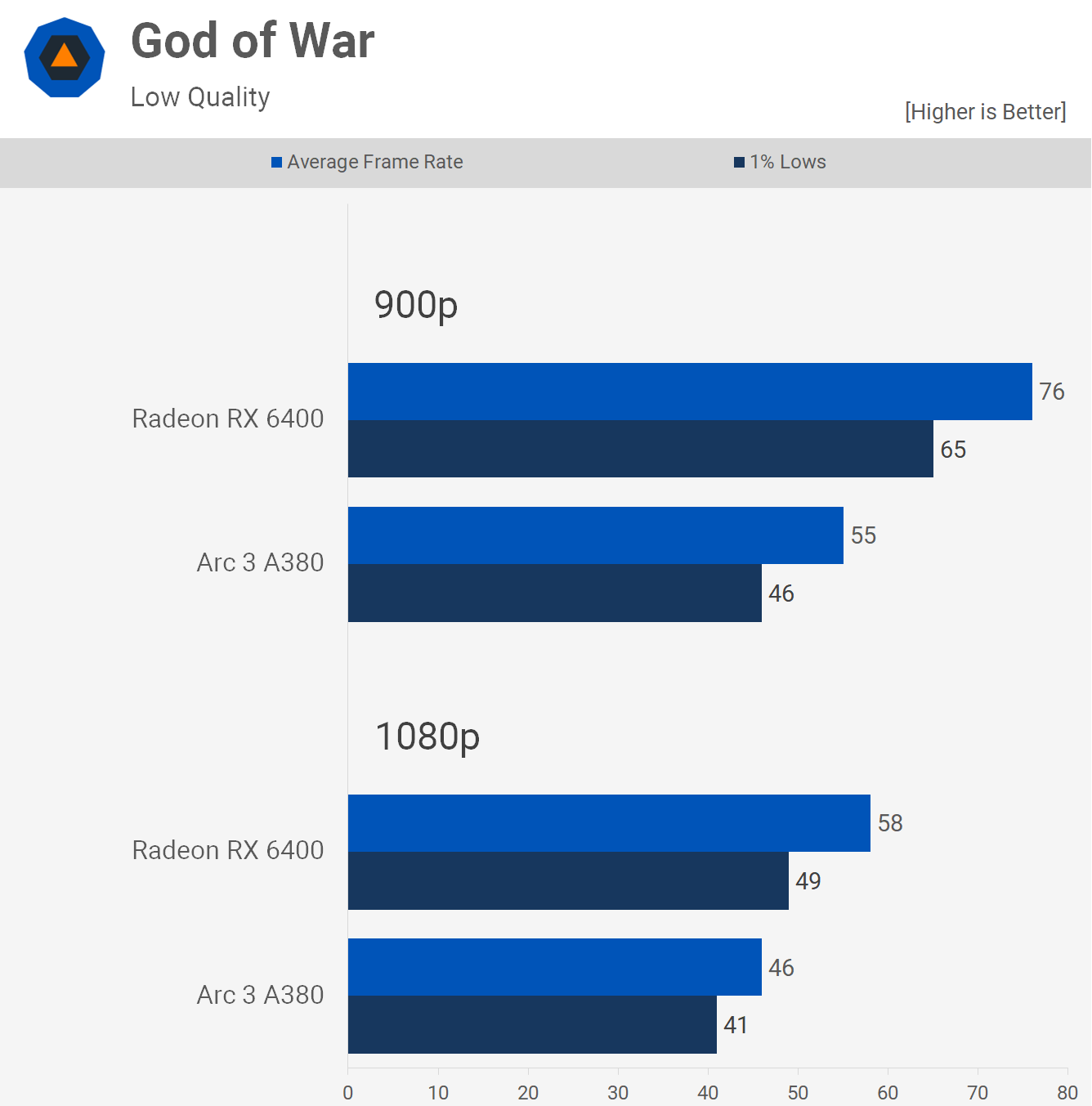
The God of War experience with the A380 was interesting because at first we thought this was going to be another non-starter. The game did load, but the initial menus were extremely slow and almost impossible to navigate, but once we managed to hit the 'continue' button the game loaded and was quite playable.
Like with CSGO, we did experience a few crashes while testing, so although we managed to gather our results they're only for reference given the stability issues.
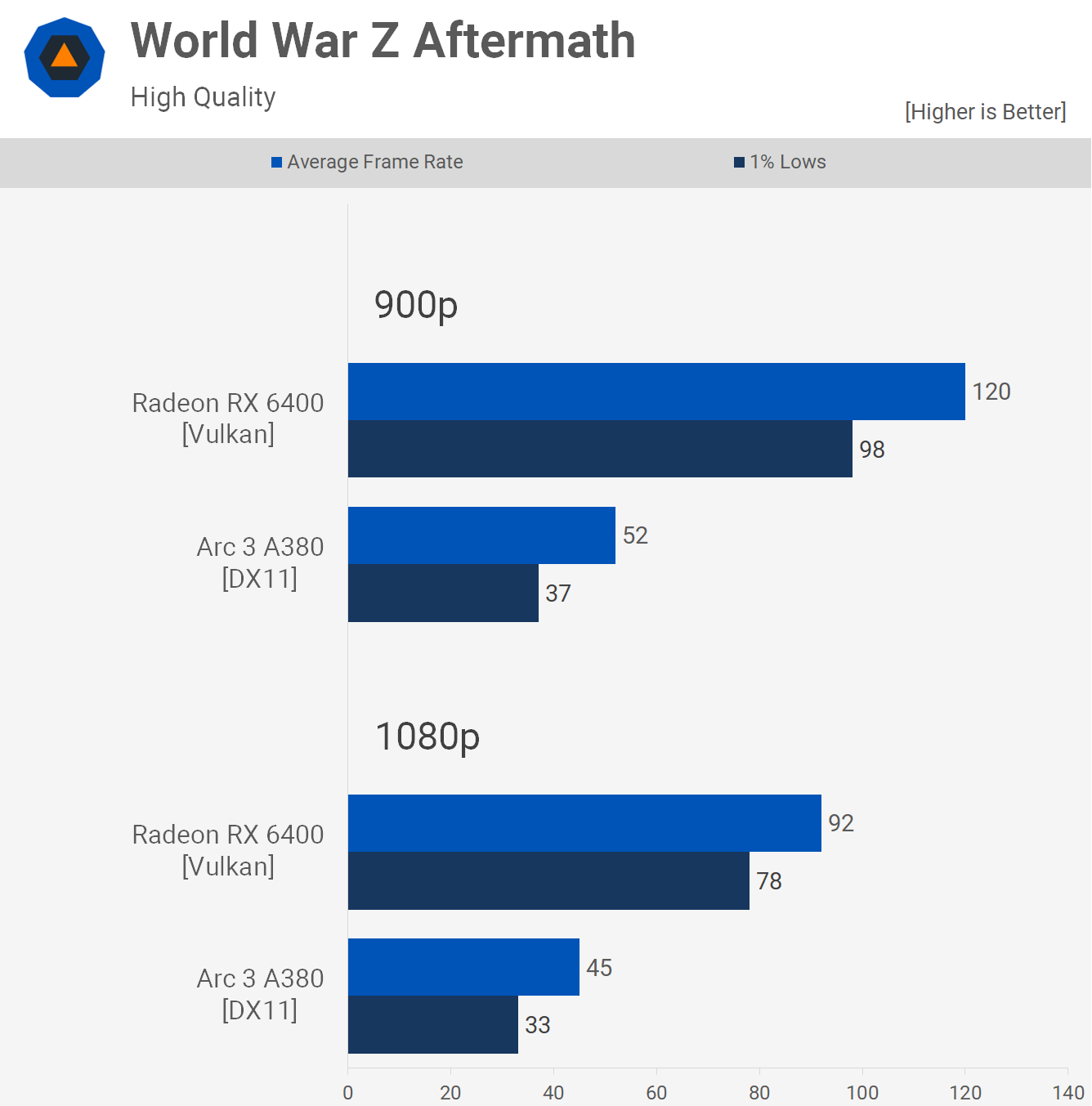
In World War Z Aftermath we ran into more issues. For some reason it wasn't possible to use Vulkan in this title either. We could only run with DX11 and while the game ran fine, it would crash on exit and hang the entire system for 30-60 seconds, so that was fun.
This all means that the Radeon 6400 was tested using Vulkan while we ran the A380 using DirectX 11. The performance was horrible, especially relative to the RX 6400 which offered over twice the performance.
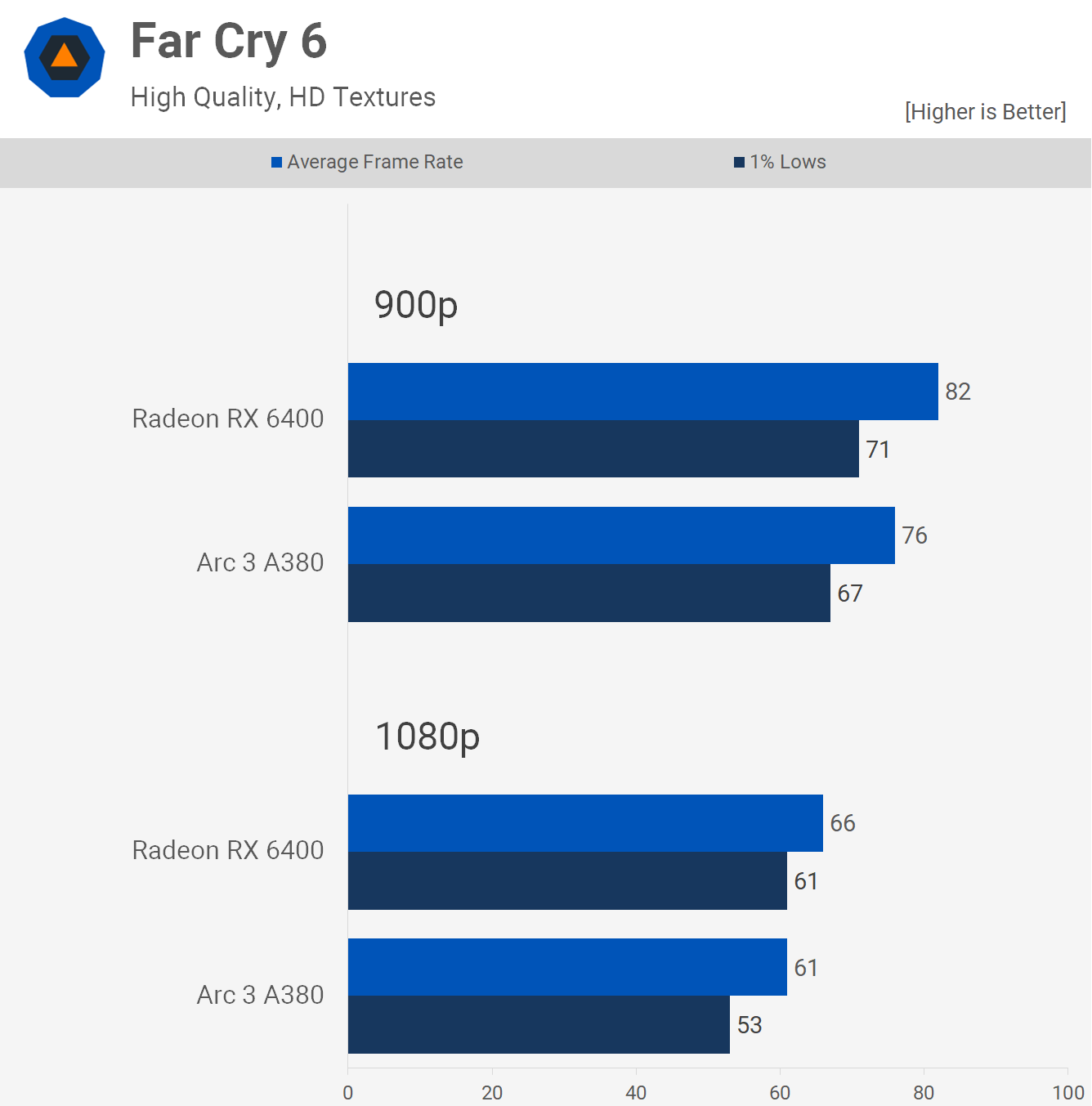
Far Cry 6 also suffered from a menu bug which resulted in very slow navigation, making it difficult to change settings or even get into the game. That aside, the game didn't crash, at least during our testing and performance overall was decent. This was one of the stronger results for the A380.
Performance Summary
We've looked at the individual results of 15 of the 51 games tested, now it's time to see how the Arc 3 A380 and Radeon RX 6400 compare in all 51 games at 900p and 1080p...
Starting with the 900p data, we see how much of a mixed bag the Arc 3 A380 is and sadly it's a bit more "bad" than it is "good." As seen earlier, the A380 showed impressive returns in a handful of games including Hitman 3, The Division 2, Doom Eternal, Rainbow Six Extraction and Metro Exodus...
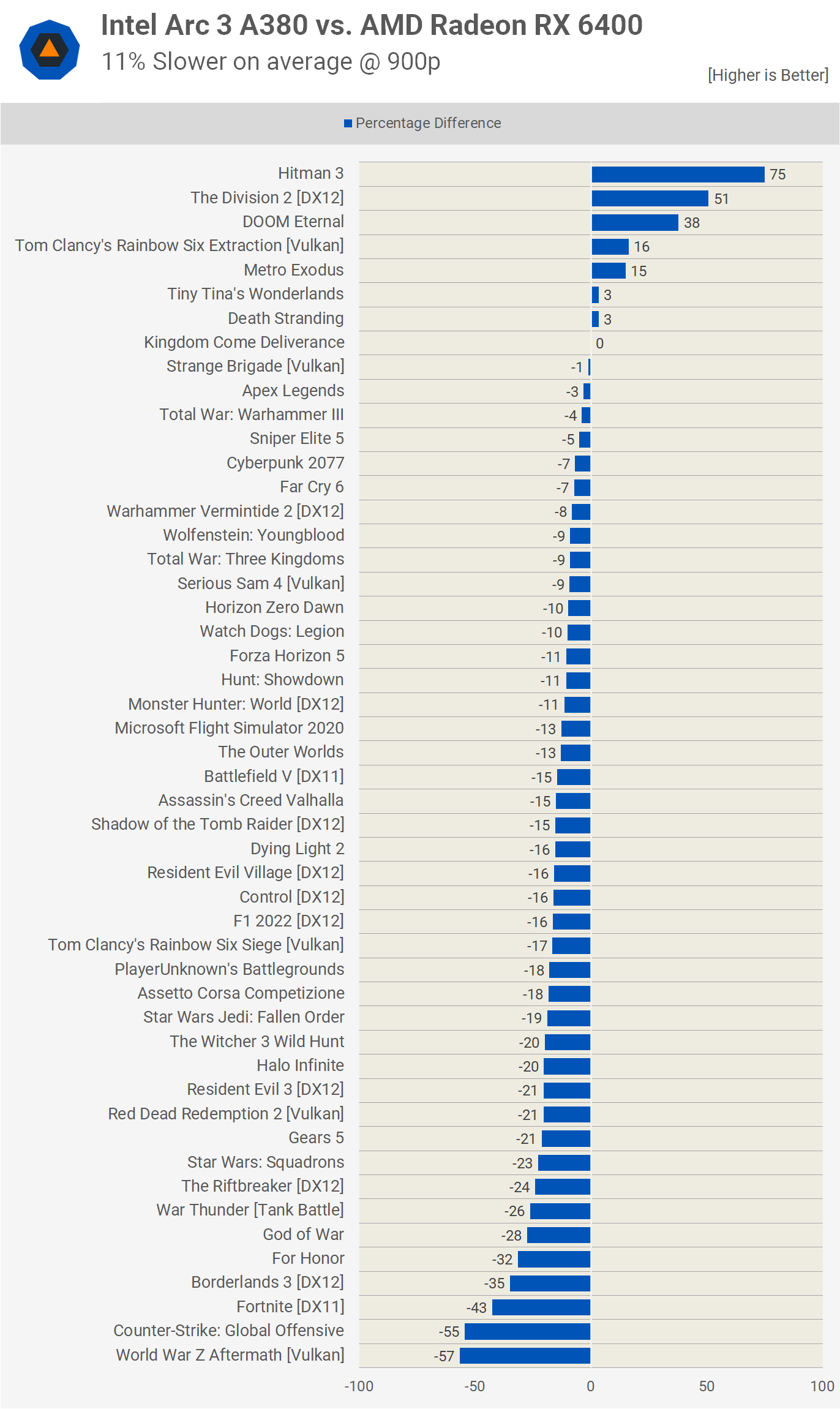
In 7 of the games tested performance was highly competitive with margins within 5%. Unfortunately though, 14 of the games saw the A380 trail by a 20% margin or greater with most seeing a 10% or larger margin for an 11% difference on average.
Of course, these results omit Dirt 5 where the A380 failed to launch while games such as God of War and CSGO suffered stability issues.

The margin at 1080p moves slightly in favor of the Intel A380 where it was 7% slower on average. But again, that doesn't give us the full picture as we're looking at a mixed bag of results, and that's ignoring the titles that either didn't run or had some kind of game breaking issue.
What We Learned
We have to admit the Intel Arc 3 A380 didn't perform as poorly as we had expected in this 51 game benchmark, but that's not to say the experience was good overall. There were a few titles where the experience was great and many where it was just decent, but there were many where the performance was horrible or stability was a problem, or even both.
There's also two sides to Intel driver problem... first, there's game support which we've just tested and clearly there's a lot of work remaining to improve performance, compatibility, and stability. The other side of the driver equation is the control utility, or Intel's version of Nvidia's GeForce Experience or AMD's Adrenalin software.
Intel's Arc Control is horrible with so many issues we simply can't cover them all in this review. It would require its own dedicated space, case in point, that's what Gamers Nexus did with a video titled "Worst We've Tested: Broken Intel Arc GPU Drivers" and we can confirm we've experienced almost all of the issues discussed there. So it's broken and Intel has a mountain of work ahead of them, especially if they plan to release Arc later this year in "official capacity."
It's also worth noting that the Radeon RX 6400 is a truly terrible product, so we've intentionally set the bar extremely low for Intel at the entry-level. Right now the RX 6400 costs at least $150 and is only a justifiable purchase for those who require a single-slot low-profile graphics card. Outside of that you're either best off saving up for an Radeon RX 6600 or shopping second hand.
In our A380 review we said we'd be tempted to roll the dice on the A380 in the hope that Intel comes through with the driver support, but after spending more time with it, we're not so confident about willing to take that bet. With half decent drivers it would be a much better product than the Radeon 6400, but if and when they'll get there is hard to say.
Put in a situation where we required an entry-level graphics card, we think we'd take to eBay or a similar site in search of a second hand GeForce GTX 1650, Radeon RX 580 or something along those lines. We really hope Intel can turn things around, but it's going to take some major changes and we're not sure Intel is capable of that. Only time will tell.
